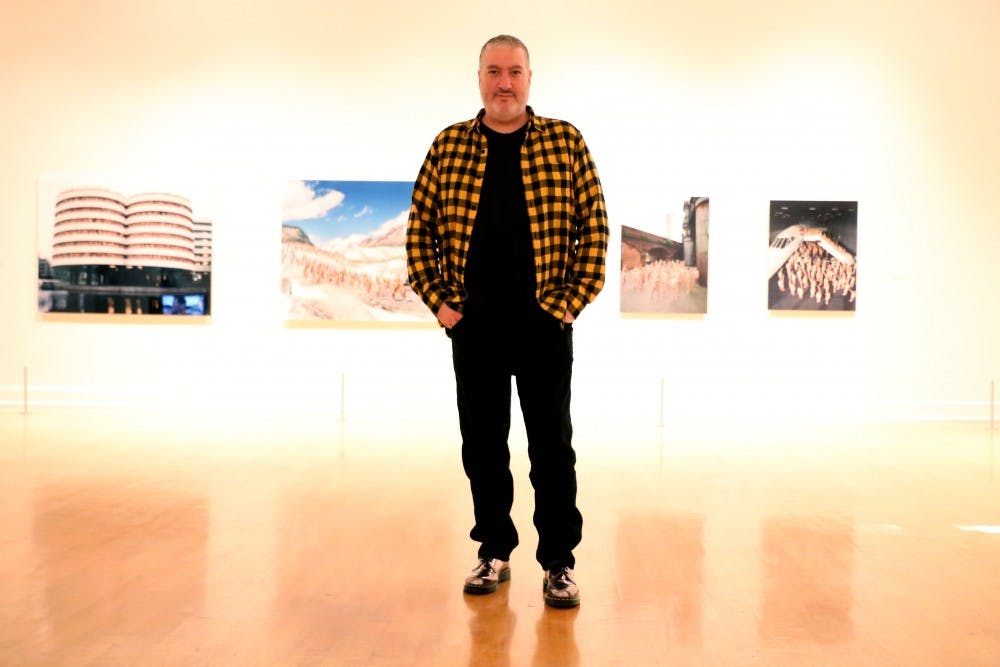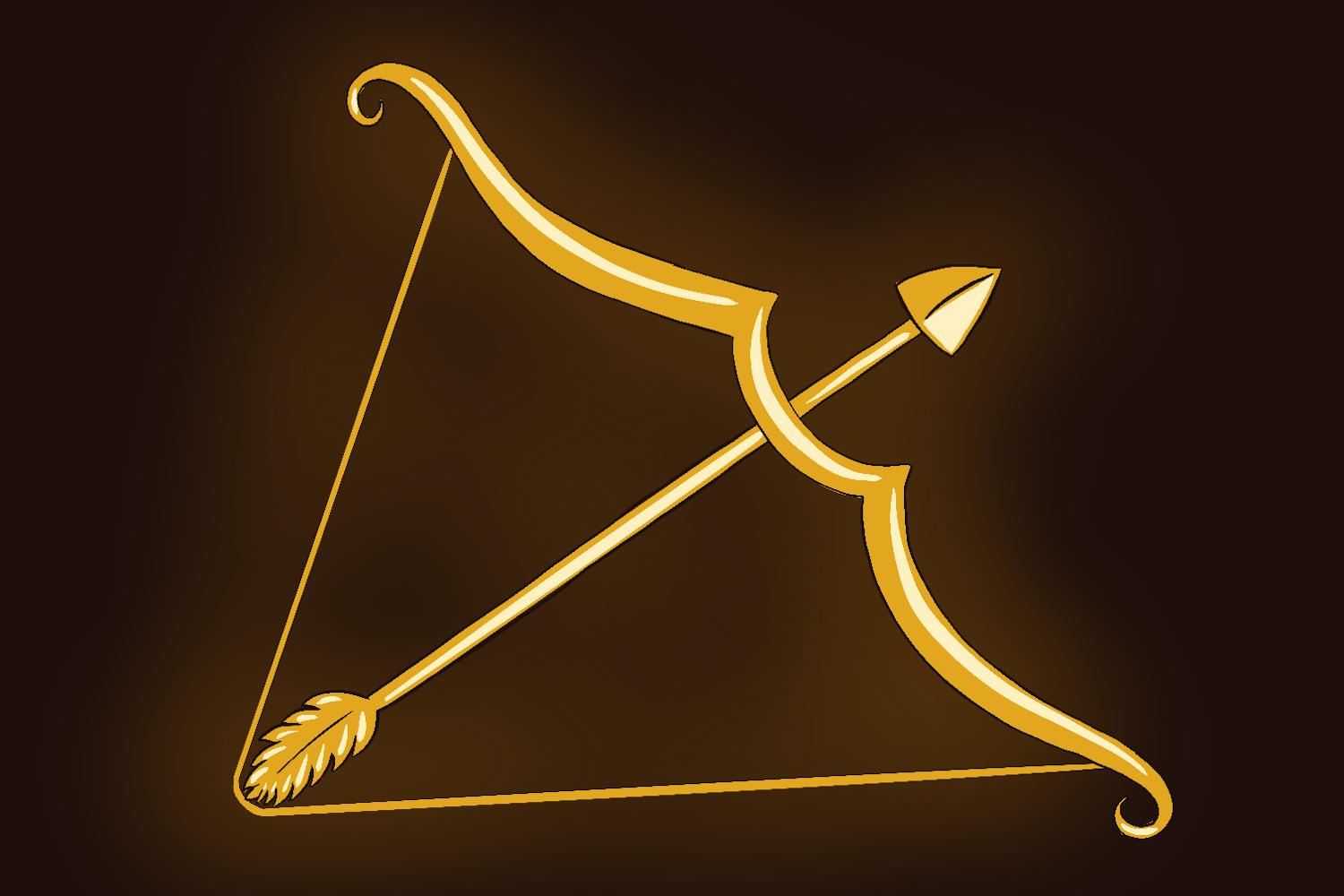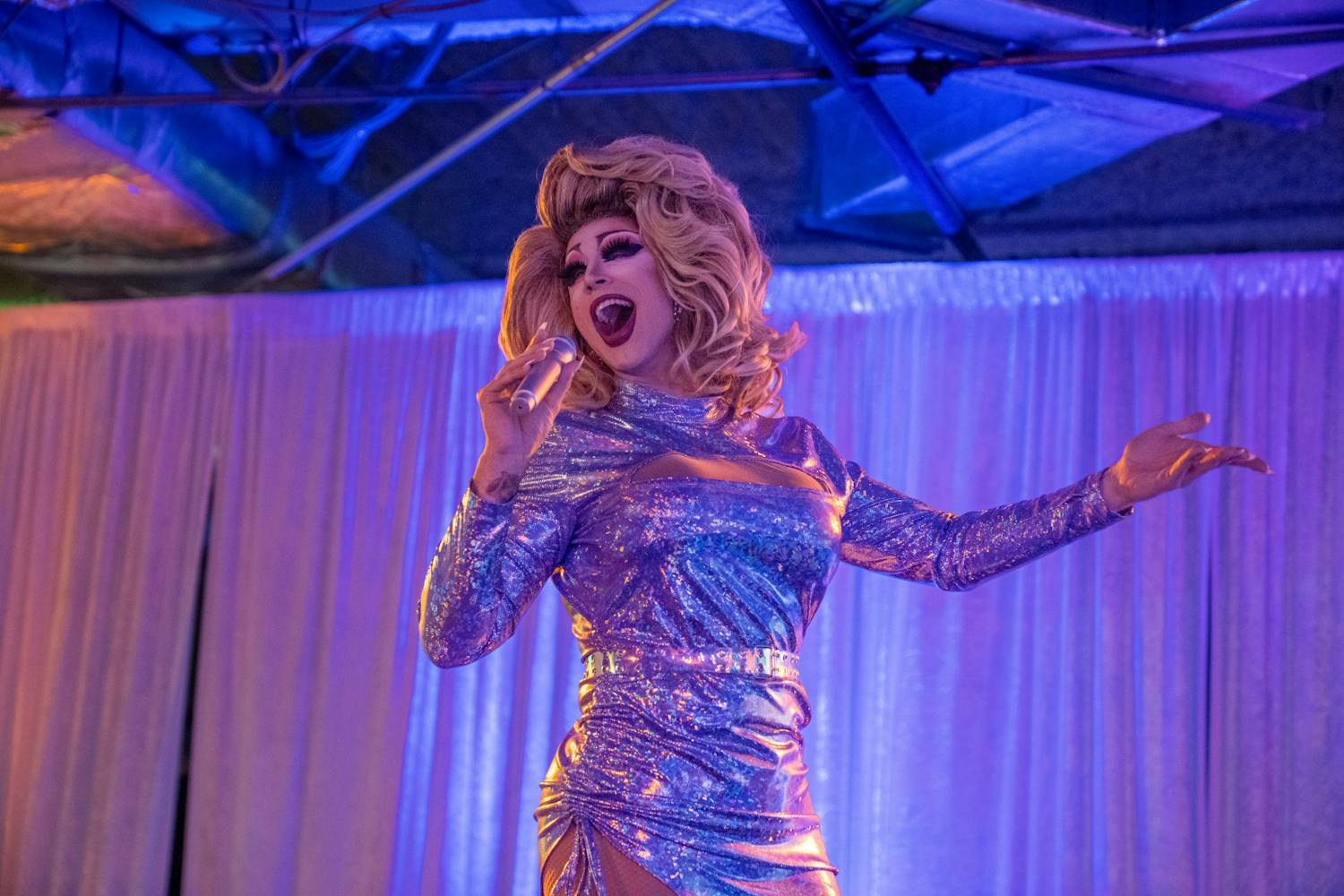The relationship between art collector and artist is one of potential complexity, but the photographs in “Participant: Photographs by Spencer Tunick from the Stéphane Janssen Collection” present a selection of Spencer Tunick’s works, all of nude bodies in groups and alone. These pictures abstract the nude form, and the sheer number (sometimes in the thousands) of bodies are used as a painter might use watercolor or a sculptor clay.
Collector Stéphane Janssen makes an appearance in 14 of Tunick's works. My favorite of his appearances is Janssen, sitting in front of a painting of a mountain, surrounded by naked mountain climbers.
Janssen has worked closely with Tunick for years, and had (mostly) kind words for the artist.
“Spencer is a wonderful friend, and is the kindest person in the world, but when he is behind the camera, he is a dictator,” Janssen said.
Janssen continued with an approximation of the artist’s style when he is at work.
“‘I don’t like your tattoos, go to the back.’ ‘You, out, I don’t want you in this picture,'” Janssen said.
Read more: ‘Vanitas: Contemporary Reflections on Love & Death’ seeks solace in the inevitable
While there is obviously artistry in controlling the way that subjects look in a work, Tunick runs into social and political factors that eliminate the possibility of creating or showing nudes in the country President Barack Obama recently called “the most powerful on Earth.”
“It’s ironic just that my work would be shown in one of the most conservative states, and it just shows that universities are safe havens for freedom and sanity,” he said.
Tunick discussed the policing of his work, and that Facebook threatened to take down his page twice. Tunick said a high-level executive at the company told him that there were philosophical back and forths to decide the role of his nude art on Facebook. Today, he has to blur or edit the nudity that is so central to his work.
“When you post my work on Facebook, it’s not considered art, it’s considered pornography. And your site will be taken down for 24 hours, so don’t risk it,” he said. “There’s no algorithm that you can create to stop a pornographic world.”
“I think on the individual level they can imagine being part of a work, so how they interact to the possibility of their own nudity, and participation in art comes into play,” he said. “I think it would take them away from the everyday, run of the mill thought of being the only place you’re going to be in a large crowd is at a sporting event, and that there’s people out there actually making art with the body in masses.”
When Tunick shot one of the pictures in Harlem, he had to hide from the police. Although the photograph only includes about 25 people, when a cop car rolled around a corner, he told everyone to pretend they were on an architectural tour of the neighborhood. Once the police rolled away, he told everyone to disrobe.
The effect is a littering of naked bodies on a New York City street, unlike any other artwork I’ve ever seen. In this metropolitan setting, Tunick even won a Supreme Court case to continue his work photographing the nudity.
Spencer Tunick began working in 1990, and since 1994 has created 75 human installations. He is profiled in three documentaries, one titled “Naked States.”
Tunick described what happens after using people as a medium that is alive, has legs and is sometimes awkward. But when a photograph is taken, something solidifies.
“This solid presentation and cherishing the object creates more than the moment actually is, and that’s what photography is all about: making something special that is special, but sort of wraps everything up,” he said.
ASU Art Museum Creative Impact board member Susan Shaffer Nahmias is a new ambassador, and came out to see how the exhibit might impact the community.
“I think every time an exhibit that’s unexpected in content shows up and is made available to a broad community … that it’s a tiny toe in the water in making a dent and making change of opening people’s minds,” she said.
Shaffer Nahmias lamented the complex nature of this artwork that is so bogged down by the politics of the U.S., and noted that ASU’s status as a state agency could possibly put a damper on the creation of a Tunick work in collaboration with the ASU Art Museum.
“It’s sad that it’s so much easier on another content,” she said.
One work that stuck out to Shaffer Nahmias was a photograph taken in Gaasbeek, Belgium, in front of a castle. The work features naked people facing away from the camera and sleeping on pillows.
“I know he said it’s about (dreams), but it looks like all sorts of leaves in the fall,” she said. “You get this moment of human vulnerability that’s so sweet, and you don’t always get that because of the politics in America.”
The book accompanying the exhibit, “Participant,” is available in the ASU Art Museum gift shop with 20 percent reduction in price available at the opening reception on Jan. 14 from 5 p.m. to 7 p.m.
The exhibit is free at the ASU Art Museum located on the Tempe campus and will run until May 28. The museum is open Tuesday from 11 a.m. to 8 p.m. and Wednesday through Saturday from 11 a.m. to 5 p.m.
Correction: The reporter previously wrote that Stéphane Janssen appeared in six of Tunick's photos, but it was 14. The reporter also mistakenly wrote that a certain photo was taken in Manchester, UK, however it was taken in Gaasbeek, Belgium. The article was altered to reflect these changes.
Related Links:
Six Andy Warhol works donated to ASU Art Museum
Reach the reporter at pnorthfe@asu.edu or follow @peternorthfelt on Twitter.
Like The State Press on Facebook and follow @statepress on Twitter.




